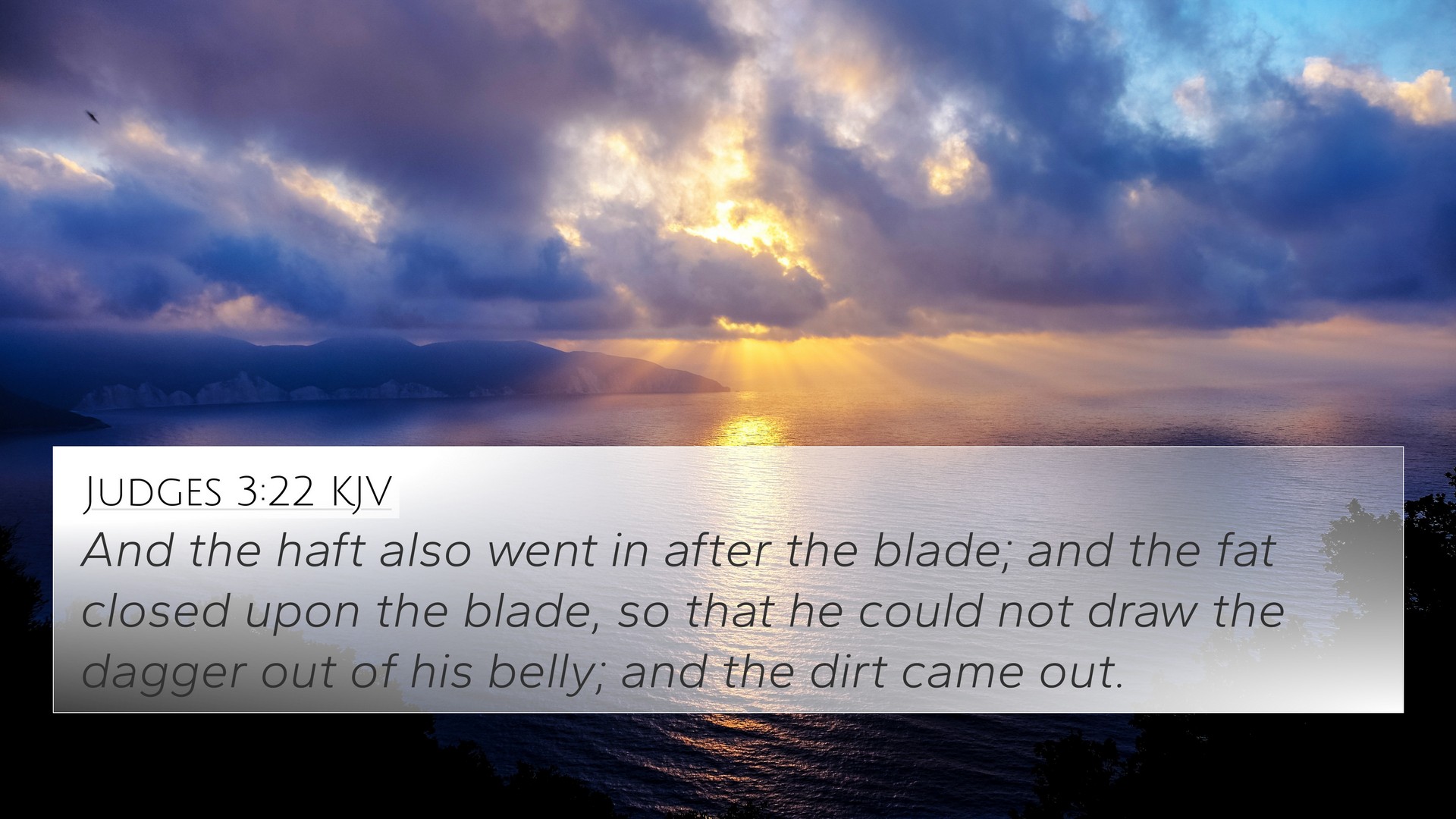Understanding Judges 3:22
Bible Verse: Judges 3:22 - "And the haft also went in after the blade; so he died."
This verse refers to the death of Eglon, the king of Moab, at the hands of Ehud, a judge of Israel. The act itself is significant not just for its violent outcome, but also for the deeper theological implications and narrative context within the book of Judges.
Contextual Overview
Judges is a book characterized by the cyclical pattern of sin, oppression, repentance, and deliverance. Eglon, a symbol of Israel's oppression, represents the enemies that Israel faced during this turbulent period. The method of his assassination by Ehud carries both poetic justice and a divine plan for liberating Israel.
Commentary Insights
Matthew Henry's Commentary
Matthew Henry emphasizes the boldness of Ehud in confronting Eglon. He notes that the description of the assassination underscores the effectiveness of Ehud's deed, highlighting not just the act of killing but also the delivery of justice to the oppressed Israelites.
Albert Barnes' Notes
Albert Barnes provides insight into the significance of the "haft" and the "blade," illustrating Ehud's cunning and the surprise element in his approach. He reflects on the cultural context that illustrates the severity of the crime against Israel and the retribution exacted through Ehud.
Adam Clarke's Commentary
Adam Clarke explores the implications of Eglon’s death in relation to Israel's freedom. He analyzes the text's language, and its portrayal of Ehud as a divinely appointed deliverer, thus framing his actions within God's plan for Israel's redemption throughout their period of distress.
Thematic Connections
This verse is potent in illustrating several themes prevalent throughout Scripture. It showcases themes of deliverance, divine justice, and the consequences of sin, echoing similar instances in both the Old and New Testaments.
Bible Verse Cross-References
- Exodus 3:7-10 - God hears the cries of His people and raises up a deliverer.
- Judges 4:9 - Deborah speaks of God's promise to deliver Israel through a woman.
- 1 Samuel 12:9 - The theme of Israelites forgetting their God and falling into oppression.
- Psalm 107:10-14 - God delivers those in darkness and oppression.
- Matthew 1:20-21 - The deliverance motif fulfilled in Christ.
- Romans 8:31 - Assurance of God's support against oppression.
- Revelation 19:11 - The righteous judgment of God against oppressors.
Cross-Referencing Biblical Texts
Engaging in cross-referencing biblical texts helps unravel the interconnectedness of biblical themes. Judges 3:22 stands as a focal point for understanding both the severity of sin against God and His faithful deliverance of His people:
- How to use Bible cross-references: To uncover deeper meanings, consider thematic ties, such as the nature of God's deliverance seen in Judges 3:22 and its resemblance to New Testament deliverance narratives.
- Detailed cross-reference between Gospels: Analyze parallels between the deliverance of Israel in Judges and the saving work of Jesus in the Gospels.
Conclusion
Judges 3:22 is not merely a historical account; it embodies the recurring theme of sin and God’s redemptive actions throughout the Bible. For those studying the Scriptures, understanding this verse in the broader context of biblical narrative enriches one’s grasp of God’s continuing work in human history.
Further Study
As you delve into Judges 3:22, consider employing a Bible concordance or a Bible cross-reference guide to facilitate your exploration of interconnected themes and characters.


